Taulman BluPrint is a thermoplastic copolyester blend. It is a material with increased heat and wear resistance. The material can be used to print parts that will withstand fatigue resistance and tear strength. BluPrint allows designers to 3D print parts that will take high heat for outdoor use such as part replacements for autos, boats and aircraft.
Description
Taulman PCTPE
PCTPE stands for “Plasticized Copolyamide TPE” or a chemical co-polymer of highly flexible nylon and TPE (thermoplastic elastomer). PCTPE has several unique features that allow any user to print a highly flexible part with the added durability of our nylon polymers. This combination of polymers was developed specifically to allow anyone using current FFF 3D Printers to print parts from durable prosthetics to complete cosplay wearable outfits, cell phone enclosures as well as highly flexible utility/industrial parts. The flexibility of PCTPE means that the end parts will have the smooth lustrous texture of nylon, the added flexibility offered by a rubber like TPE, yet maintain the high durability and non-delaminating benefits of all taulman3D Printing materials.
The list of features includes:
Print temperature = 230C
Low shrinkage = prints on glass with a 50% water/PVA glaze heated to 40C
Super Layer to layer bonding that allows for single perimeter walls to be folded along thread axis.
Takes on any acid based color dye (RITT) very fast = 5 min @ 140F
Takes on acid based antimicrobial coatings for footwear and prosthetics.
Color = Bright White/reflective Nylon surface
Tensile PSI = 5,043
Modulus PSI = 10,954
Elongation @ Break = 497%+
Ease of use – The addition of TPE and a new lower temperature nylon, puts PCTPE into the class of slicer software settings most of us use for ABS. 230C print temp and other ABS settings defined by nozzle size and printer type.
Super layer to layer Bonding – PCTPE ensures that you do not need to use an enclosure just to get excellent layer bonding of parts from 100mm to 1,000mm+. With PCTPE the layer bonding will allow you to print single perimeter walls and bend or fold along the printed axis without delamination or separation.
Wearable Texture – As nylon is known to be a comfortable material to the touch, we made sure that the 3D Printed texture of PCTPE was just as smooth to the touch as any wearable nylon. This lustrous texture is key to making new wearable objects that flow with body movements. In addition to the lustrous texture, the flexibility of PCTPE is more accommodating for complex wearable designs.
NOTE: Both Nylon and t-glase will NOT seize in your hotend even if left in place with heater “ON” for 72hr’s. Both will oxidize and extrude soot upon reactivation. 150mm of purge is all that is required to begin printing anew.
1. Manufacturer ID is self assigned and used for Production and shipping references
2. Based on an average of reported values. Nominally 5C lower with SeeMECNC and E3D HE’s due to their structures
3. Note on t-glase…If the platform cools faster than the part, then a glass platform may suffer cracks. Tg on Nylon can be missleading due to nylon’s structure
4. Pyrolysis is basically “Boiling”….Check your thermistor!
5. Print Bed temperature for nylons is a function of reducing the “shock” from layer to layer. Shock is defined as the time between layers such that the temp diff is at it’s greatest.
6. Small parts in t-glase need a fan on the part being printed due to it’s Tg
7. Moisture plays a strong part in shrinkage. Less moisture = less shrinkage.
8. To adhere nylon to nylon, use a soldering iron.
9. Testing performed by St Louis Testing Laboratories
Unit = 5500R Instron with Bluehill Software….
ASTM D412-0a E2
5 pc’s printed at rated temperature
Bars are .1314″ thk
1 perimeter
All surfaces (no fill, just surfaces)
45 degree surfaces
10. As natural is not a specific color.
11. Living hinge is using the material flexible properties as a hinge assuming 2000 90 degree transitions.
12. As nylon will take on water, only air cooling should be used.
Technical Specs
Print temp: 265C – 270C
Nozzle: any size
Print speed: ABS speeds
Retraction: 3-4mm
Print bed: Hot = Glass heated to 95C, Cold = Clean BuildTak or PEI heated to 90C
Net Weight : 0.45 KG (1 LB)
Color: Semi-Clear
Tolerance: 0.1mm
Temp & Data Sheet: Taulman 3D Website
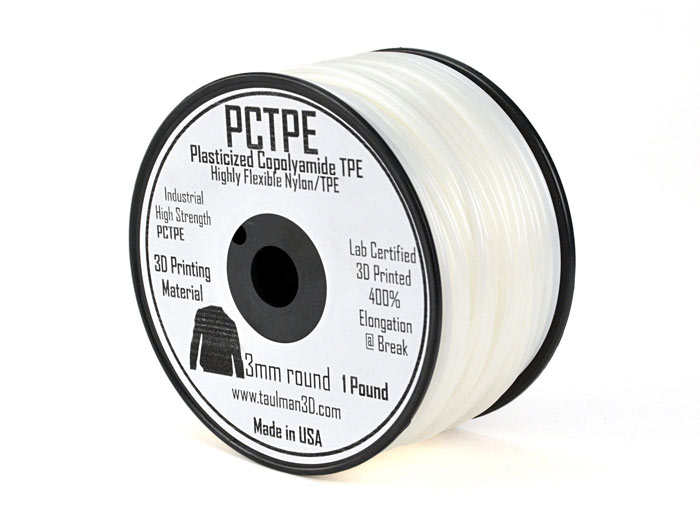

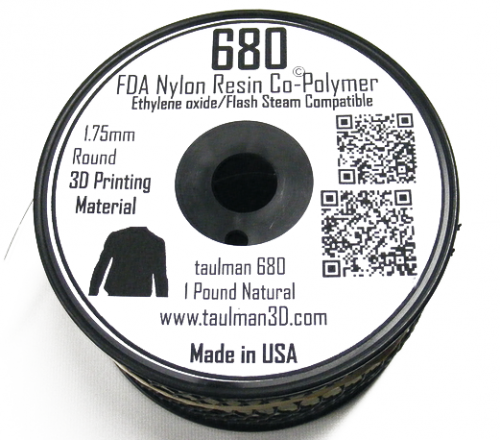
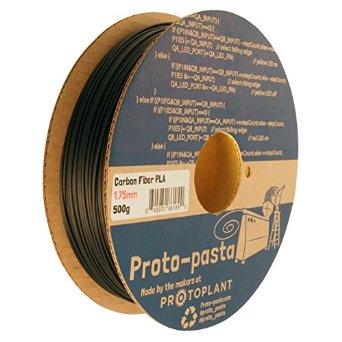
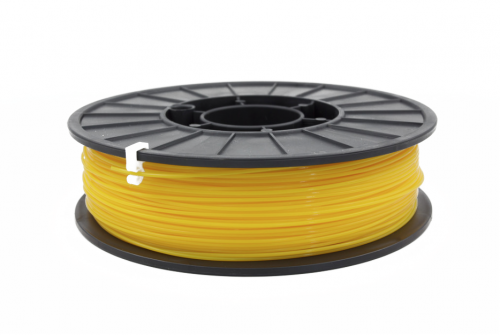
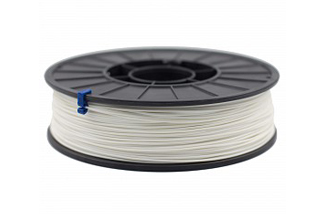
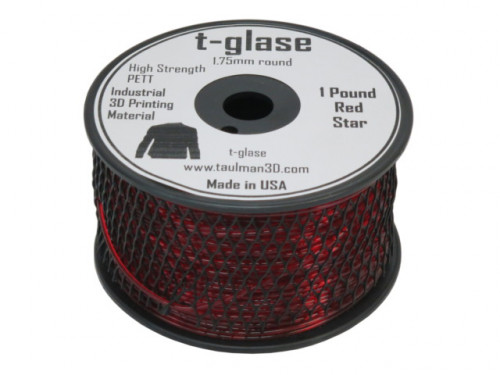
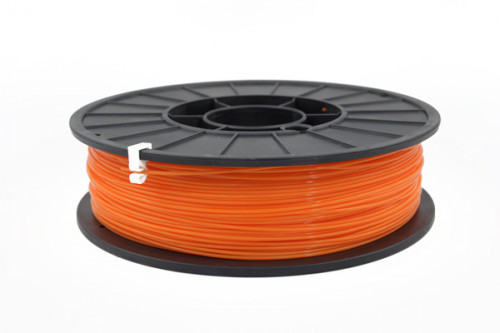
Reviews
There are no reviews yet.